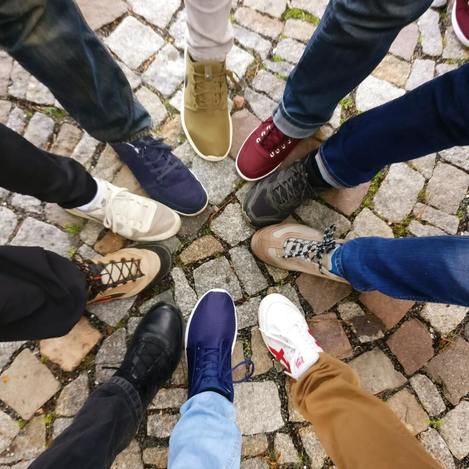Mission: Impact podcast & blog
Build a better world without becoming a martyr to your nonprofit cause
Listen on:
|
Nonprofit organizations are frequently under pressure to scale up their programs. Scalability and replicability are assumed to be a natural goal. When your program is having a positive impact on the people it is designed for, why would you not want to reach more people? Assumptions Yet there are some big assumptions built into this model. The first is that growth is always good. Our culture worships growth. The economy is only considered healthy when it is growing. A successful career is one moving up in responsibility and scope. A website wants to grow its readership. A podcast wants more listeners. Yet should this always be the goal? Are there alternatives to growing larger in scale? What about going deeper? Are nonprofits like machines?  Another is that nonprofits and their programs are like machines. The basic assumption for being able to scale and replicate is that the program is essentially similar to a widget. You should be able to document the basic elements of a program, train new people to deliver it, create it in a new location and the logic follows that you will then get the same outcomes in the new environment. Can you franchise a nonprofit program? Many nonprofits follow this model -- Habitat for Humanity, City Year, Teach for America. It borrows from the for-profit sector concept of a franchise. Yet can a nonprofit really be franchised? Can you standardize the program and deliver equivalent outcomes in the new arena? Can you really just hit copy and paste when you are dealing with people? Nonprofits as Human Systems  Yet nonprofit programs are not machines. They are inherently human systems. They are built with people with certain skills, talents and abilities to deliver a program. Delivering that program happens in a particular social context. The original participants bring a specific set of circumstances, attitudes and abilities. These all interact to create a unique mix. They have more in common with the uniqueness of snowflakes than widgets or hamburgers. Another analogy that comes to mind is a play - each performance is unique even though the script and the players are the same. Similar, sure, but unique. Usually the goal of these types of program is some type of transformation. To transform people's lives in some way -- Such as building young leaders or increasing educational attainment or creating self-sufficient home owners of low income families. Transformation has little to do with creating new exact copies of the original (widgets, hamburger, t-shirts). What has your experience with scaling? What has worked and what hasn’t? To discuss the strategic issues your organization is facing, inquire about a free coaching call. Comments are closed.
|
Categories
All
Archives
July 2024

Grace Social Sector Consulting, LLC, owns the copyright in and to all content in and transcripts of the Mission: Impact podcast, as well as the Mission: Impact blog with all rights reserved, including right of publicity.
|
Telephone301-857-9335
|
info[at]gracesocialsector.com
|
Grace Social Sector Consulting, LLC, owns the copyright in and to all content in, including transcripts and audio of the Mission: Impact podcast and all content on this website, with all rights reserved, including right of publicity.
|